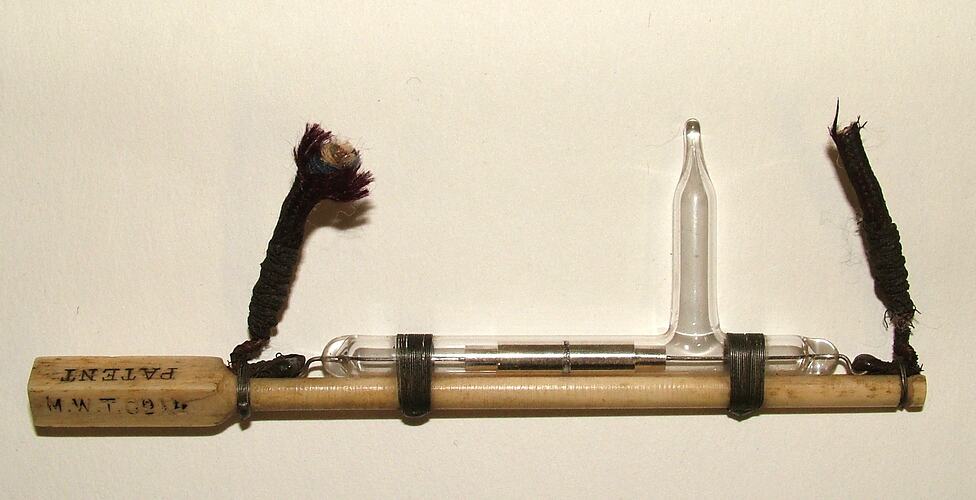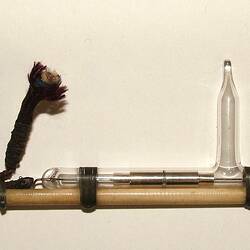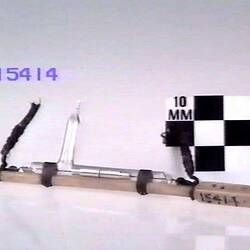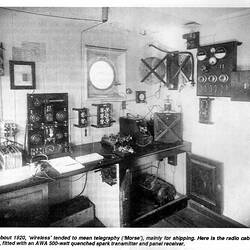Summary
The coherer was the first practical detector of radio waves.
The phenomenon on which it is based was discovered in 1878 by D. E. Hughes and rediscovered by E. Branly in 1890. It was developed and named 'coherer' by Sir Oliver Lodge as a detector of radio waves in 1894 and adopted soon after by Marconi, using his own design. It was not particularly sensitive and was replaced by the more sensitive and reliable magnetic detector in 1902.
Jensen, in his book, quotes J. A. Fleming's description of Marconi's coherer thus:
In a small glass tube about 3 or 4 cm long and 5 mm internal diameter, he placed two silver plugs fitting the tube tightly. To these plugs were attached platinum wires sealed through the closed ends of the tube. The inner ends of the plugs were polished and slightly amalgamated with mercury and brought within a couple of millimetres of each other.
The interspace was filled with a very small quantity of nickel and silver filings, 95 per cent nickel and 5 per cent silver, carefully sifted. The glass tube was then exhausted and sealed. Subsequently the ends of the silver plugs were bevelled off so as to make the interspace wedge-shaped.
Physical Description
Glass tube with glass side piece and wire leads at each end, strapped to holder made of bone. The sealed exhausted glass tubecontains two silver electrodes separated by small gap filled metal filings (96% Nickel and 4% Silver). Plug ends are bevelled.
More Information
-
Collecting Areas
-
Acquisition Information
Donation from A. F. Newman, 05 Sep 1924
-
Manufacturer
Marconi Wireless Telephone Co, England, Great Britain, circa 1900
-
Inscriptions
Bone Holder: M.W.T. CO. LT.D M.M.S.S. PATENT.
-
Brand Names
-
Classification
-
Category
-
Discipline
-
Type of item
-
Overall Dimensions
96 mm (Length), 33 mm (Width), 17 mm (Depth)
-
References
[Book] Jensen, P. R. 1994. In Marconi's Footsteps 1894 to 1920 Early Eadio., 1994, Chapter 11, pp 88-92 Pages
-
Keywords



